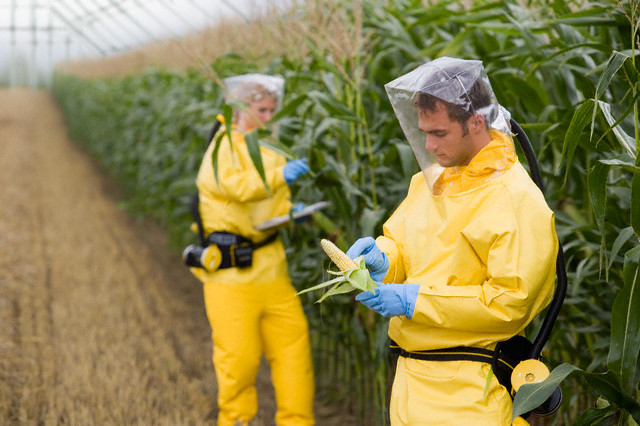The EPA recently released a long-awaited draft report demonstrating that toxic “forever chemicals” in sewage sludge applied to farmland can cause cancer and other diseases in people who live near farm fields where the sludge is applied, or consume tainted milk, beef or other foods from these farms.

The chemicals – per and polyfluoroalkyl substances (PFAS) – contaminate wastewater treatment plant sludge that for decades, at EPA’s urging, has been applied as cheap fertilizer to many millions of acres of pasture and cropland. PFAS are taken up by crops and grasses grown on contaminated land, accumulate in the meat and milk of pasture-raised livestock, and pollute the drinking water of at least 45% of Americans. Testing by the Centers for Disease Control and Prevention shows that nearly everyone in the U.S. has one or more PFAS in their bloodstreams.
PFAS are known as “forever chemicals” because of their resistance to breakdown, meaning they can build up in the environment and in humans.
“EPA’s report is a long-overdue first step in assessing the harms caused by dumping toxic sludge on farmland,” said Bill Freese, Science Director at Center for Food Safety (CFS). “But studying the problem isn’t enough. EPA should follow Maine’s lead and ban the disposal of PFAS-laced sludge on food-producing lands,” he added.
Municipal sewer systems channel huge amounts of PFAS-contaminated waste to wastewater treatment plants, which remove the nutrient-rich solid portion (sludge) before discharging the liquid effluent into waterways. The treatment process of most plants is not designed to remove PFAS, which concentrate in sludge at far higher levels than are found in the incoming waste stream or the treated water discharged into waterways. Millions of tons of this toxic sludge are applied to farmland, landfilled, or incinerated.
As EPA concedes, its assessment understates risks in several ways: by evaluating harm from exposure to just two of at least 23 PFAS chemicals EPA has detected in sewage sludge (see SI Table 3); assuming sludge contains far lower levels of these two PFAS than tests show it does; assessing risk from exposure to one consumable at a time (water, milk, beef, eggs, fish) rather than from combined exposure; and modeling average rather than high-end exposure conditions; among other weaknesses.
“Even EPA’s flawed assessment finds substantial risks from PFAS exposure: kidney and liver cancers, decreased birth weight, increased cholesterol, and diminished immune response that lessens vaccine effectiveness,” said Freese.
EPA is taking comments on the draft risk assessment for 60 days, until March 17th.
Background
PFAS comprise a class of roughly 15,000 chemicals, and are used in numerous products, such as grease-resistant fast food containers, water-resistant clothing, carpets, shampoo and dental floss; to create Teflon non-stick pans; and in firefighting foams, among many other consumer product and industrial applications. Major manufacturers include 3M, DuPont and Chemours, which collectively have produced many millions of pounds of PFAS since their introduction in the 1940s.
3M, the Minnesota-based company that first produced PFAS chemicals, concealed its knowledge of PFAS toxicity for decades, as well as its widespread presence in both human blood and sewage. DuPont has been repeatedly sued for poisoning waterways with PFAS-laced industrial effluent, as dramatized in the film Dark Waters. EPA likewise took no action despite learning of PFAS-contaminated sludge a quarter of a century ago.
After many years of neglect, the Biden Administration’s EPA established a program in 2021 to tackle PFAS contamination. The Agency imposed strict limits on six PFAS in drinking water in 2024, and designated two as “hazardous substances” under the Superfund statute. These measures enhance the Agency’s legal authority to compel removal of these PFAS from drinking water, enable communities to hold polluters accountable for cleanup, and represent a major advance in protection of public health from these potent toxins. But much remains to be done. EPA has thus far taken little action to address a citizens petition to remove PFAS from pesticides, and in fact continues to approve new uses for them. FDA has likewise failed to ban PFAS in food contact substances, as demanded in a petition filed by CFS and other public interest groups, or establish limits on PFAS in milk, fish or other foods.
While manufacture of the two PFAS assessed in EPA’s report (PFOA and PFOS) has been phased out by some major manufacturers, their PFAS replacements have also proven to be hazardous. Moreover, studies continue to show that fluorine-containing precursor compounds still produced in large quantities can break down to more toxic forms detected in sewage sludge. Manufacturers must find safe alternatives to PFAS, and governments can play a role through legislation, for instance New York state’s recent ban on PFAS in apparel.


















